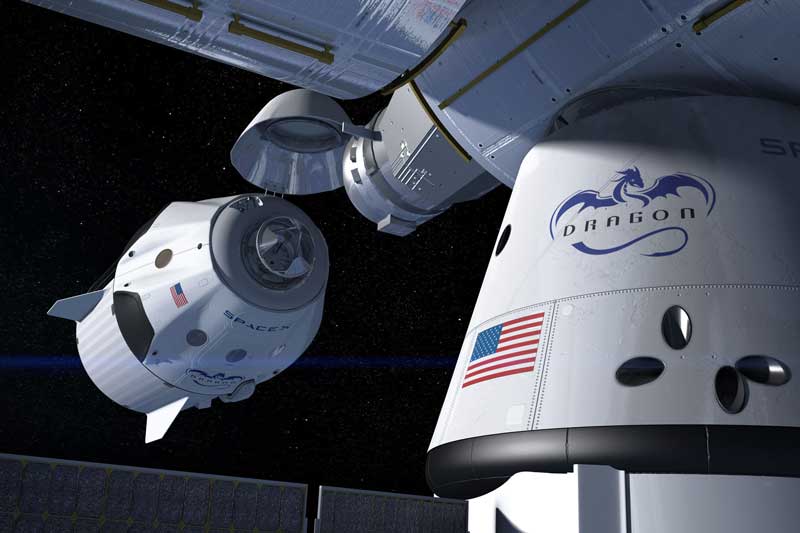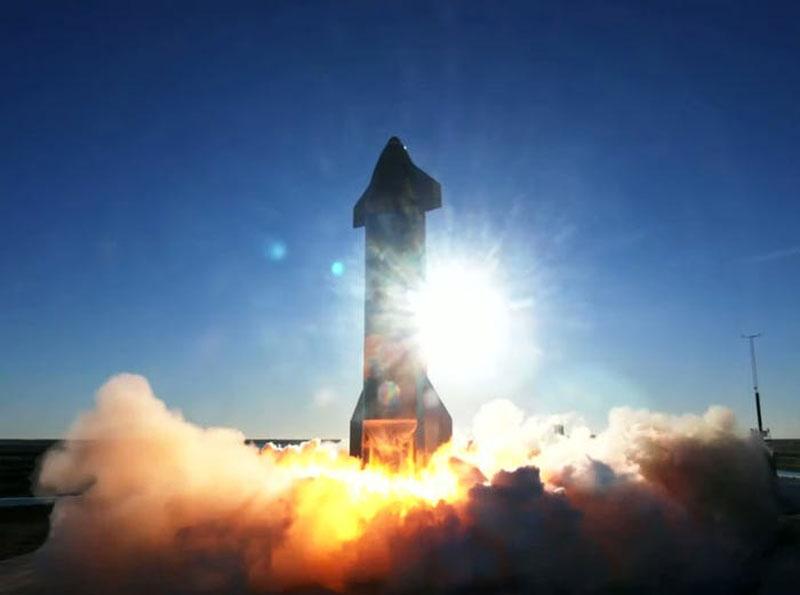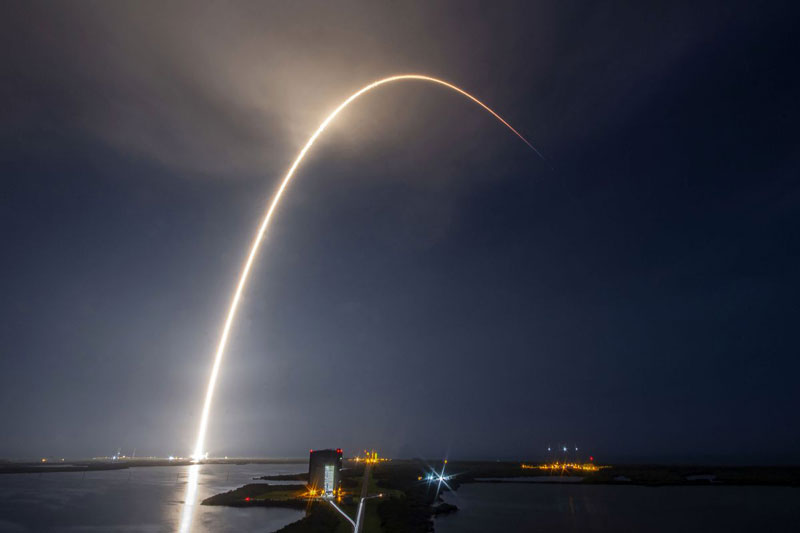SpaceX Getting Closer To Space Tourism
The prospect of space tourism has been promised as ‘just over the horizon for what seems like years, maybe decades. And yet sometimes it may seem as if nothing much has been happening. Progress can seem slow, even non-existent. 2020 has been a momentous year in so many ways, but there have been no good news headlines telling us of the long promised inaugural Virgin Galactic flight, featuring a beaming Richard Branson… No front page stories of delighted tourists returning from their spectacular journeys into orbit… No proud announcements from Jeff Bezos’s Blue Origin headquarters…
And yet in truth, behind the endless updates on Covid 19, Brexit and the latest celebrity gossip, there has been plenty going on in the background. Maybe not announced by the klaxon of tabloid headlines, nor by booming announcements on the Ten O’clock News, but there nonetheless. And much of this progress has been made by Elon Musk’s SpaceX company…
What has SpaceX been up to?
Unusually, even the company itself has had little to say on its progress toward everyday space tourism. But this is because it has been concentrating on its many other space programmes. And the progress it has been making in these areas has been phenomenal. Here is just an outline of some of the successes SpaceX have recently achieved.
Human Spaceflights to the International Space Station (ISS)

SpaceX has a long term plan to provide regular spaceflights for NASA, ferrying astronauts to the ISS and returning them safely to Earth. In 2020, it achieved this goal. It had already run several successful return cargo missions. In fact, by the end of 2020, its Dragon capsule had been sent to the ISS more than twenty times.
Especially relevant for space tourism purposes, these flights involved the re-use of the same capsule. In fact, three of the Dragon vehicles have now been used three times each. This proves that the concept of re-launching the same capsule several times is perfectly possible in practice.
Nevertheless, the responsibility for sending humans into space is a real step up from merely ferrying cargo. On November 16th 2020, a SpaceX Dragon capsule was launched on one of the company’s Falcon 9 rockets. The spaceship was carrying four astronauts: Mike Hopkins, Victor Glover, Shannon Walker, and Japanese astronaut Soichi Noguchi to dock with the ISS. What’s more, this was a six month operational visit, so the four remained in orbit to carry out their long term mission.
The success of this launch means that SpaceX is now officially certified by NASA for operational crew missions to and from the ISS.
Falcon and Falcon Heavy Rockets
The company’s workhorse rocket is the re-usable two stage Falcon 9. It has already seen more than one hundred successful launches, more than sixty of which have been returned safely to Earth. Of these, more than forty of these have already been re-used. The Falcon 9 is used for satellite and ISS supply launches.
Meanwhile, the Falcon Heavy is a higher specification rocket which can carry heavier payloads into space. It is not used so frequently, and is in any case likely to be replaced once the company’s Starship combination reaches full production.
Starship

SpaceX has ambitions to go way further than the low Earth orbit required for visits to the ISS or space tourism. It plans to go to the Moon, the planet Mars and even beyond. Its revolutionary Starship rocket is what it plans to use to get there.
Made of stainless steel, the Super Heavy rocket which powers Starship is a fully reusable spacecraft which is capable of carrying both cargo and crew into orbit, to the Moon, Mars and even further into the solar system. It is the most powerful rocket ever made, surpassing the previous record holder (Apollo’s Saturn V) by some margin. The new combination will be capable of producing 16 million pounds worth of thrust and carrying a payload of over 100 metric tonnes into Earth orbit. Future upgrades are planned with the potential of ferrying up to a hundred passengers plus cargo to the Moon.
But these are not merely futuristic fantasies, because in November 2020, the rocket was successfully launched for the first time. The test flight achieved an altitude of around eight miles (40,000 feet) before performing a reversing manoeuvre and returning to Earth. OK, it wasn’t a complete success, but it was always a particularly ambitious expectation for the rocket to return safely to the ground at the first attempt.
In fact, perhaps the most notable aspect of the launch was the further mangling of the English language perpetrated by the company’s PR team. The rocket apparently suffered a “rapid unscheduled disassembly”. A crash, in other words.
Furthermore, SpaceX is already heavily involved in NASA’s Artemis programme to return to the Moon, following in the footsteps of the Apollo programme of the 1960s and 70s. Indeed, it is already in the midst of designing a lunar lander for the programme.
Starlink

SpaceX is creating a new service which will offer the potential for global access to the internet, no matter how remote your location. This Starlink programme involves sending thousands of small satellites into a very low altitude Earth orbit (around 340 miles). By the end of 2020, the company had already put one thousand such satellites into space, via sixteen separate launches.
Further launches are planned at the rate of around two per month, each capable of ferrying a further sixty satellites into orbit. The ultimate ambition is to have either 11,000 or 40,000 in total, depending on the quality of coverage required.
Military Missions
In addition to its other civilian based operations, SpaceX is also tasked with launching satellites for the new US military Space Force and the Department of Defense. Military missions are, by their nature secret, but a rocket launch is difficult to carry out without being spotted, so we can at least know when they take place, if not what is being launched.
Therefore, in what was a very busy year for the company, we know that December 2020 saw the launch of a secret spy satellite, mysteriously known only by its government mission number, NROL-108. This was SpaceX’s 26th successful launch of the year – a record for the company.
SpaceX Space Tourism Progress Summary
At first sight, all these individual success stories may not seem entirely relevant to progress toward everyday space tourism. Yet in fact, they add up to an incredible rate of progress. SpaceX – a private company remember, is now responsible for far more regular rocket launches than the US state space agency NASA.
The company’s vast operations add to the foundations supporting routine passenger carrying space flights. SpaceX is already making successful launches on a regular basis, including sending humans into space. This means that it already has the vast infrastructure and the manufacturing capacity necessary to make routine tourist space flights a reality.
Space tourism may not be the highest priority for the company, but its wide ranging expertise and sheer volume of space interests make the prospect of sending people into space one of its least ambitious plans. Space travel is never easy, but SpaceX give the impression that putting tourists into space is well within their capabilities.
Perhaps the clearest indication of the company’s incentive to do so is the prospect of using revenues from these highly lucrative flights to help fund its more ambitious missions to the Moon and Mars. Regular launches ferrying astronauts to and from the International Space Station are already taking place on SpaceX rockets and Dragon capsules.
It seems clear that the first scheduled tourist trips to space must surely be within sight, so expect some good news VERY soon. Maybe even in 2021…
